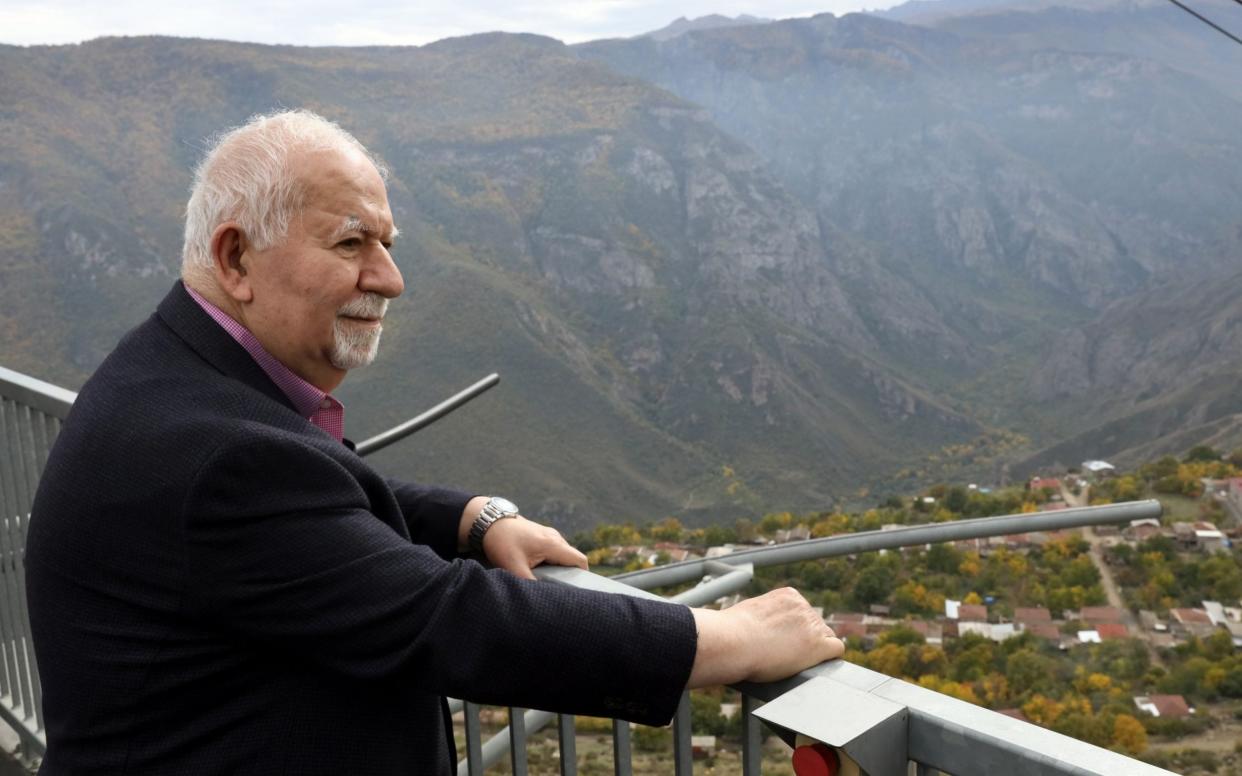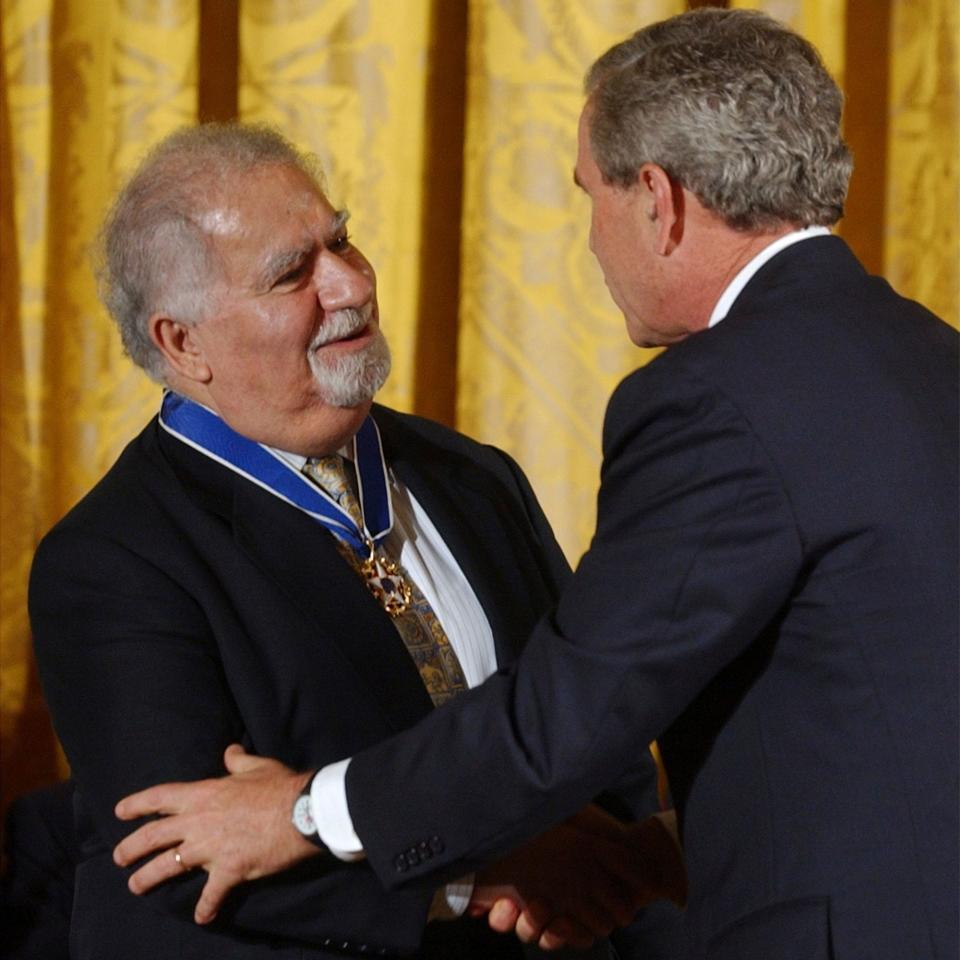Vartan Gregorian, wide-ranging philanthropist best known for rescuing New York Public Library – obituary

Vartan Gregorian, who has died aged 87, was an Armenian immigrant to the US, born into poverty in Iran, who became a scholar, university leader and an Olympic-standard fundraiser and philanthropist, on first name terms with everyone who was anyone; one newspaper described him as “one of the few men in the world who could phone Bush or Bono and expect both of them to take his call”.
In a colourful career, Gregorian, a short, stout man of boundless energy and charm, notched up a formidable CV. He served as president of Brown University and president of the Carnegie Corporation of New York (the foundation created by Andrew Carnegie in 1911 to promote education and peace).
He was a member at various times of the boards of the Institute for Advanced Study at Princeton, Human Rights Watch, the Museum of Modern Art in New York, the J Paul Getty Trust, the Aga Khan University and the Bill and Melinda Gates Foundation. He had “some 50” honorary degrees and even agreed to become special adviser to Culture and Sport Glasgow, a charitable company set up by Glasgow city council in 2007 to run its sports and leisure services.

In the US he was best known for almost single-handedly rescuing the New York Public Library, an institution whose magnificent Carrère and Hastings Beaux-Arts pile at 42nd Street and Fifth Avenue, as Gregorian recalled in his memoir, The Road to Home (2003), had been one of his first ports of call when he arrived in the city in 1956, a shy and lonely scholarship student.
When he took the helm as president and chief executive in 1981, the city was just emerging from a decade-long financial crisis. The main library was in a parlous state. Fittings and fixtures were falling apart; precious volumes were disintegrating; cataloguing had fallen behind; opening hours had been cut to a minimum and staff morale was at rock bottom. Even so, Gregorian recalled: “The conditions at the main research library appeared idyllic in comparison to the plight of the 83 branch libraries throughout Manhattan, Bronx and Staten Island.”
Donors were reluctant to pour money into what seemed a lost cause; the board of trustees was weak and the city government indifferent to its fate.

The key to Gregorian’s achievement in turning its fortunes round was turning the library into a fashionable philanthropic cause and getting people to recognise its importance as a vital part of the city’s cultural and intellectual life. He and his wife Clare became fixtures on the New York social scene, recruiting a glitzy list of donors, headed by Brooke Astor, who became the honorary chairwoman of the board and donated nearly $25 million. There were “Literary Lions” dinners at $1,000 a plate, charity balls and other functions.
Brooke Astor, famous in her heyday for her grace and charm, became a close friend, though towards the end of her life she was not the easiest of companions, as Gregorian explained when called to give evidence after her death in 2007 at the trial of her son Anthony, who had been accused of taking advantage of her Alzheimer’s to take possession of her £135m estate – a case that hinged on her mental health at the time she wrote her will.
Gregorian recalled how, at a lunch in 1999, thrown for the then Camilla Parker Bowles, Brooke Astor addressed the future Duchess of Cornwall with the words: “You’re keeping this mistress business in the family. Your grandmother [a reference to Alice Keppel, mistress of Edward VII and a great-grandmother of the duchess] would be proud of you.”

During his seven-year tenure at the library Gregorian raised more than $325 million, doubled its budgets and undertook extensive renovations and repairs, including the reclamation of Bryant Park, next door to the main library, which had become the squalid haunt of drunks and drug dealers.
Gregorian’s solution was to send the local police chief a bouquet with a note saying: “These are the last flowers that will ever be seen in Bryant Park.” The man was so amused that he assigned eight of his officers to patrol it.
As Library Journal reported in 1988, Gregorian re-established the New York Public Library “as an intellectual center, magnet – and jewel”. His achievement was an inspiration to many other public library directors, who set to work to “Vartanize” their own libraries.
In 1997 Gregorian was designated one of eight “living landmarks’’ by the New York Landmarks Conservancy for his work.

Vartan Gregorian was born on April 8 1934, in Tabriz, north-west Iran, to Armenian Christian parents, Samuel Gregorian and Shooshanik, née Mirzaian. She died when he was six, after which his father remarried.
Before the war Samuel Gregorian worked as an accountant, but later became an often-unemployed office worker. Vartan did not get on with his new stepmother and was largely brought up by his maternal grandmother, who was illiterate but a magical storyteller.
When life at home became too much, Vartan would escape to the library of his Armenian church, where he had a part-time job in the stacks. “Books,” he wrote later, “freed me from my prison, transported me far away to a wonderful realm of possibilities.”
When he was 15 he ran away from home with a teacher’s letter of introduction to the Collège Arménien, a lycée in Beirut, Lebanon, founded in 1928 to educate Armenian refugees, for entry to which he had to learn French, Arabic and English. To make ends meet he worked as a waiter and cadged invitations to classmates’ homes so he could have a meal.

In 1956 he won a scholarship to Stanford University to read History and Humanities and, despite starting with shaky English, took a degree in two years, followed by a PhD in 1964. He then became a faculty member in history departments at San Francisco State University, the University of California at Los Angeles and the University of Texas at Austin before, in 1974 becoming founding dean of the faculty of arts and sciences at Pennsylvania University.
In 1979 he was appointed Provost of the university and was led to believe that he was a “shoo-in” to replace the outgoing president the following year, only to discover, listening to his car radio, that the Pennsylvania University trustees had chosen someone else. Gregorian recalled the disappointment as “the most painful experience of my entire life” and discovered that some of the trustees had dismissed him as “too ethnic” – with his “thick accent” and “unruly hair” – and lacking in “social graces” to become president.
The university’s loss was New York Public Library’s gain: “New York was full of chutzpah and I was full of chutzpah,” he wrote. “We would do our best.”
After his time at the library, in 1989 Gregorian became president of Brown University, for which, over the next eight years, he raised $537 million, helping to transform it from a minor player in the Ivy League into a world-class university.

In 1997 he moved to the Carnegie Corporation of New York as president, exchanging his role as a supplicant to that of benefactor. The same year he was anointed a prince of the Armenian Apostolic Church during a visit to New York by Aram I Catholicos of Cilicia, a spiritual leader of Armenians. In 2015 was instrumental in the founding of the “100 lives initiative” to demonstrate the impact of the Armenian Genocide and how many survivors and their families went on to lead successful lives and contribute to global culture.
Gregorian’s relationship with Scotland started in 2001 when the businessman Tom Hunter, who had recently sold his company Sports Division to JJB Sports, turned up at the Carnegie Foundation for advice on how to use his wealth for good causes. Gregorian became a member of his new charitable trust, the Hunter Foundation, and it was Hunter who introduced him to Bridget McConnell, wife of the then Scottish first minister Jack McConnell, and head of Glasgow council’s culture and leisure department, to which Gregorian agreed to served as an unpaid special adviser.
In 1998 Gregorian was awarded the National Humanities Medal by US President Bill Clinton and in 2004 was presented with the Medal of Freedom by President George W Bush.
In 1960, he married Clare Russell, a fellow student at Stanford. She died in 2018 and he is survived by their three sons.
Vartan Gregorian, born April 8 1934, died April 15 2021

